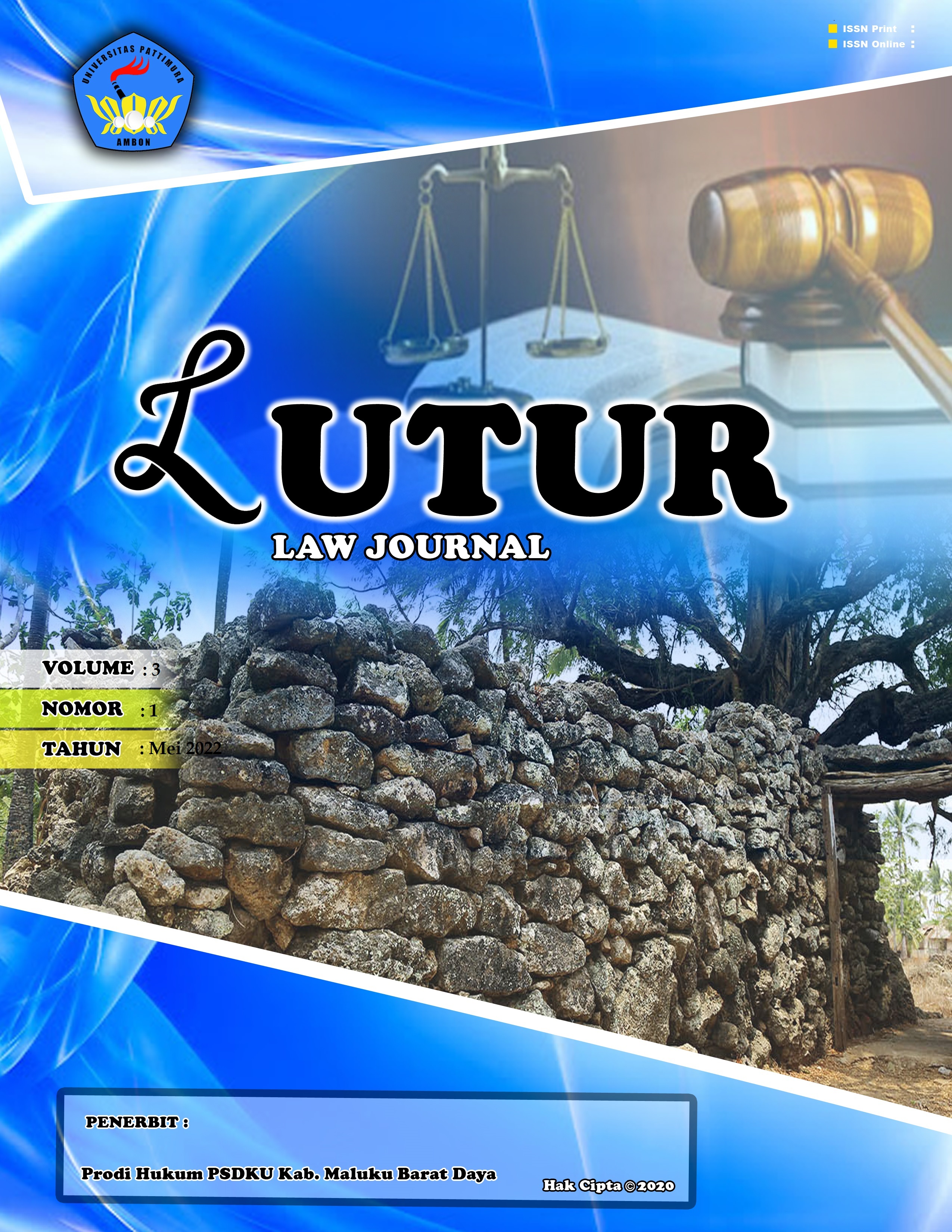Penerapan Restoratif Justice Terhadap Pelaku Tindak Pidana Penganiayaan Anak
Abstract
In accordance with the problems mentioned earlier, this research is a normative study of the application of restorative justice to perpetrators of criminal acts of child abuse through a conceptual approach, a statutory approach, prioritizing the use of legal materials through normative and empirical studies and various findings regarding the application of restorative justice against Perpetrators of Crime of Child Abuse, then from the results of this description conclusions and suggestions can be drawn. The results of the research and analysis use the concept of legal protection, which is an initial framework for thinking about the implementation of restorative justice for perpetrators of child abuse crimes. The results of the study show that the perpetrators and/or suspects of child abuse can be submitted to restorative justice by fulfilling various formal requirements for the victim by involving the families of both parties and related elements in society, namely resolving problems amicably by prioritizing applicable customary law and binding for the purpose of terminating an investigation based on restorative justice.
Downloads
References
Artikel Jurnal
Jurnal. Pengadilan Negeri Serui, Keadilan Restoratif, Juli 2022. h. 2. (https://pn-serui.go.id/2022/07/21/keadilan-restoratif-restorative-justice/)
Buku
Achmad Ali. Menguak Teori Hukum (legal theory) dan Teori Peradilan (judicial prudence). Cetakan ke-5. Kharisma Putra Utama. Jakarta , 2013.
R. Wirjono Prodjodikoro, Perbuatan Melanggar Hukum, Mandar Maju, Jakarta, 2000.
Syamsul Arifin, Pengantar Hukum Indonesia, Medan: Medan Area University Press, 2012.
Tony Marshall, Restorative Justice : An Overview, Home Office Research Development and Statistic Directorate,London, 1999
Skripsi, Tesis, Distertasi, Online/World Wide Web dan Lain-Lain
Eva Achjani Zulfa, Mendefinisikan Keadilan Restoratif, Eva Achjani Zulfa, ttp://evacentre.blog spot.com/2009/11/definisi-keadilan-restoratif.html, Diakses 15 juli 2022.
Copyright (c) 2022 Benony Gardjalay, Hadibah Zachra Wadjo, Yeheskel Wessy

This work is licensed under a Creative Commons Attribution-NonCommercial 4.0 International License.
Authors who publish their manuscripts in this Journal agree to the following conditions:
- The copyright in each article belongs to the author, as well as the right to patent.
- Authors are able to enter into separate, additional contractual arrangements for the non-exclusive distribution of the journal's published version of the work (e.g., post it to an institutional repository or publish it in a book), with an acknowledgment of its initial publication in this journal.
- Authors are permitted and encouraged to post their work online (e.g., in institutional repositories or on their website) prior to and during the submission process, as it can lead to productive exchanges, as well as earlier and greater citation of published work.
- Authors have the right to self-archiving of the article (Author Self-Archiving Policy)














